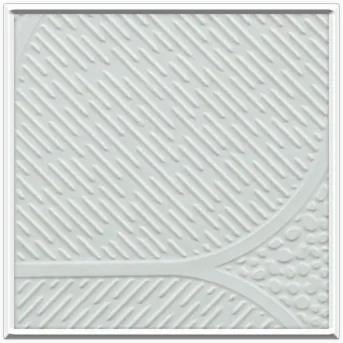Nov . 25, 2024 12:19 Back to list
acoustic mineral board
Acoustic Mineral Board Enhancing Sound Quality in Modern Spaces
In contemporary architecture and interior design, the importance of sound quality often goes unnoticed until it becomes a problematic issue. Noise pollution, whether from external sources or within the building, can significantly affect the comfort and productivity of occupants. This is where innovative materials like acoustic mineral boards come into play. These boards are designed not only for aesthetic appeal but also for their exceptional sound-absorbing qualities, making them a staple in both commercial and residential spaces.
What is Acoustic Mineral Board?
Acoustic mineral board is a specialized type of board made from mineral fibers that are engineered to absorb sound waves effectively. These boards are available in various thicknesses and densities, depending on the acoustic requirements of a space. The mineral composition contributes to the durability and fire resistance of the boards, making them a safe choice for various applications. Their porous structure allows them to trap sound, reducing echo and reverberation within a room, thus creating a quieter and more pleasant environment.
Benefits of Acoustic Mineral Boards
1. Sound Absorption The primary advantage of acoustic mineral boards is their ability to absorb sound. This property makes them essential for areas where noise control is critical, such as recording studios, conference rooms, and open-plan offices. By minimizing sound reflection, they ensure clear communication and concentration.
2. Aesthetic Versatility Acoustic mineral boards come in a variety of finishes and colors, allowing for creative integration within different design schemes. Whether used as ceiling tiles, wall panels, or standalone installations, they can enhance the aesthetic appeal of a space while providing functional benefits.
3. Fire Resistance Safety is a paramount concern in building materials, and acoustic mineral boards are often non-combustible. Their fire-resistant properties provide an added layer of safety, making them suitable for commercial buildings where fire codes are stringent.
acoustic mineral board

4. Sustainability Many manufacturers prioritize sustainability in their production processes. Acoustic mineral boards are often made from recycled materials, and their long lifespan contributes to reduced waste. Additionally, these boards can improve energy efficiency by maintaining a consistent temperature, further minimizing environmental impact.
5. Ease of Installation Acoustic mineral boards are typically lightweight and easy to handle, allowing for straightforward installation. They can be cut to size and fitted into various frameworks, making them a convenient choice for both new constructions and renovations.
Applications of Acoustic Mineral Boards
The applications of acoustic mineral boards span across multiple settings. In educational institutions, they can be used in classrooms to promote better learning environments by reducing distractions caused by background noise. In healthcare facilities, these boards help maintain patient comfort by ensuring quieter waiting rooms and treatment areas.
In the corporate world, open-plan offices benefit greatly from these boards; they create a more productive workspace by dampening noise created by conversations and office equipment. Moreover, hospitality venues like restaurants and hotels utilize acoustic mineral boards to enhance guest experience through improved sound quality.
Conclusion
As society becomes more aware of the impacts of noise on well-being and productivity, the demand for effective soundproofing solutions continues to rise. Acoustic mineral boards stand out as a versatile, aesthetically pleasing, and functional choice for architects and designers striving to create optimal acoustic environments. By integrating these boards into their designs, they can significantly improve the auditory experience of any space, ensuring that it is not only beautiful but also conducive to comfort and productivity. As the industry evolves, acoustic mineral boards will likely play a crucial role in shaping the future landscapes of our built environments.
-
Quality Ceiling Trap Doors & Access Panels | Easy & Secure AccessNewsAug.30,2025
-
Durable Ceiling T Grid Systems | Easy InstallationNewsAug.29,2025
-
PVC Gypsum Ceiling: Durable, Laminated Tiles for Modern SpacesNewsAug.28,2025
-
Pvc Gypsum Ceiling Is DurableNewsAug.21,2025
-
Mineral Fiber Board Is DurableNewsAug.21,2025
-
Ceiling Tile Clip Reusable DesignNewsAug.21,2025







